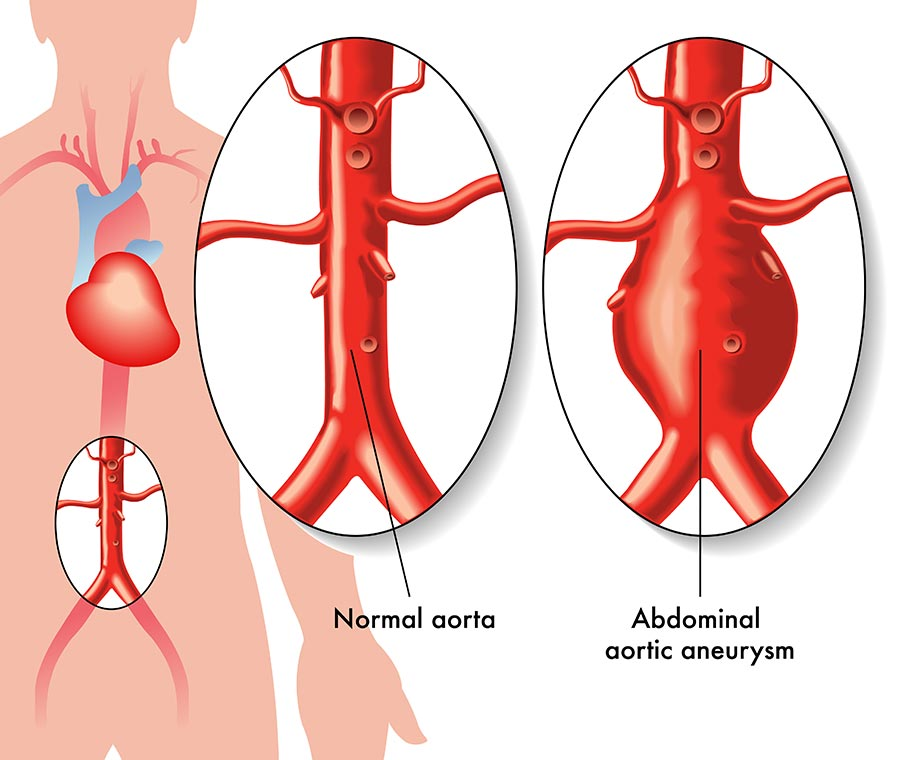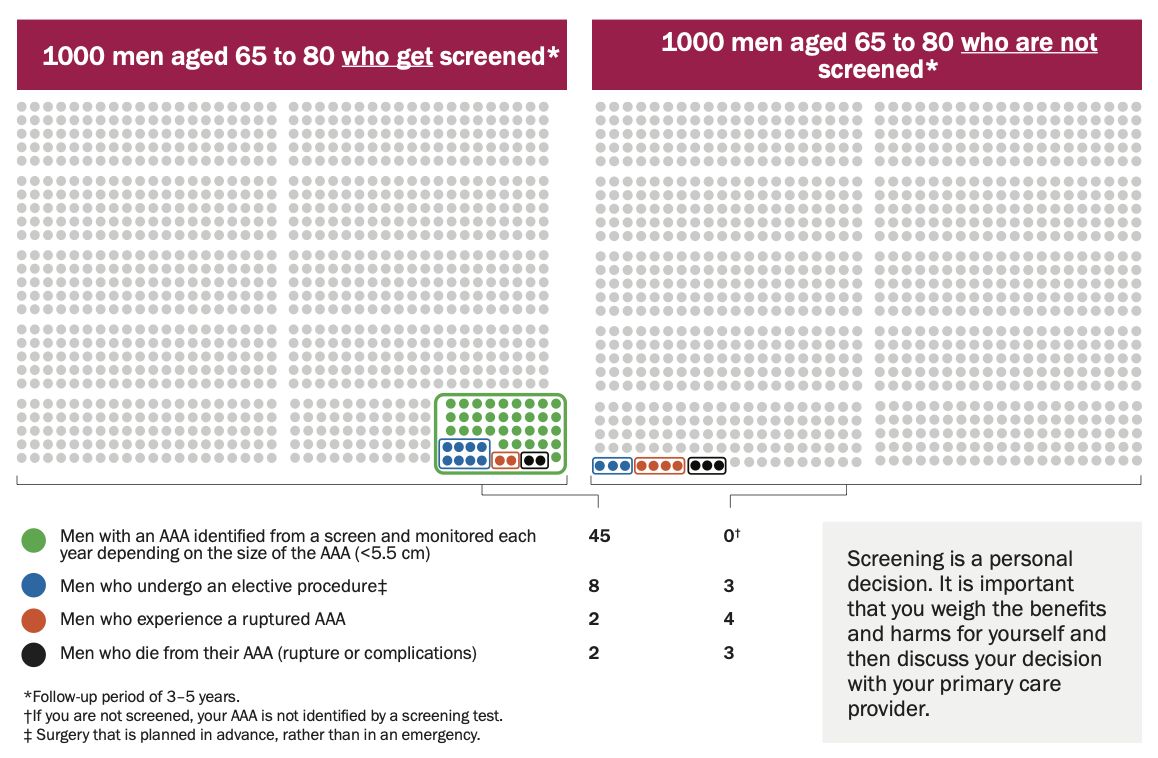Abdominal Aortic Aneurysms
aka AAA’s
What is an Abdominal Aortic Aneurysm?
The aorta is the main large blood vessel that carries blood away from our heart all the way down our body before it branches out to our legs. It is large, but usually less than 3cm wide.
In some people, the aorta can start to bulge like a balloon. That bulge is called an “aneurysm.” When this happens in the part that crosses through our belly, it is called an “Abdominal Aortic Aneurysm”, also known as a “AAA”.

It is rare for this to happen, but if it ever gets too big, there is a risk it can burst. This is a life threatening emergency. Unfortunately, if this ever happens, people usually die from this.
What Causes a AAA?
Aneurysms are caused by the blood vessel wall getting weaker over time. It usually takes many years for a AAA to develop and grow.
Risk factors include:
- Males are much more likely than females.
- Smoking.
- High blood pressure.
What are the Symptoms of a AAA?
Most people have no symptoms at all. They are usually painless and found accidentally. Some people may feel a strong pulse or “second heart beat” in their belly area.
How do you test people for AAAs?
The most common and easiest way to see if someone has a AAA is by a simple ultrasound. This is quick, easy, and painless.
Some people may require a CT scan.
Many people have already been screened for a AAA without knowing it. If you’ve ever had a CT scan or ultrasound of your belly in the past for any reason at all (i.e. belly pain, gallbladders, liver, appendix, etc), they usually also saw your aorta and confirmed it was normal.
Who Should Get Tested?
Men between the ages of 65 to 80 years old should ensure they’ve had an ultrasound (or CT scan) to ensure they do not have a AAA.
AAA’s are rare. For every 1000 men who get screened, only 45 will have a AAA. For every 1000 men screened, 1 life is saved.
Unfortunately, screening women has not been shown to save any lives. Mathematically, this is at least partly because AAAs are much more rare in women.
The following diagram from the Canadian Task Force on Preventative Health helps show the numbers:

